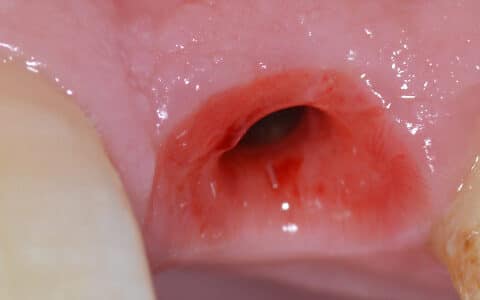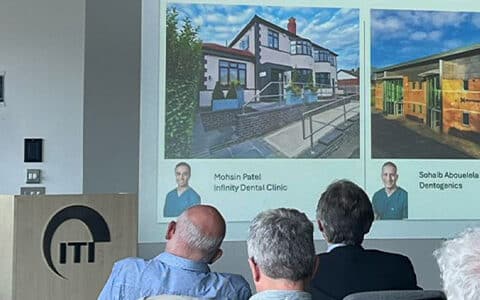MISSING TEETH
This patient had to have her upper left canine and permolar removed due to a chronic infection which had affected the 2 teeth. After the teeth were removed, she had a denture to replace these missing teeth in the upper left. The denture does not provide a natural or fully functional tooth replacement and therefore, she attended my clinic to have a better and more natural solution. A dental implant supported prosthesis was the ideal option we decided to use. I will talk you through the stages of the treatment following the initial dental implant surgery.
DENTAL IMPLANT PLACEMENT
A surgical procedure is carried out to carefully place the dental implant in the precise location required to fit the future teeth in the correct place. This procedure is normally carried out under local anaesthetic, it is painless.
We opted to provide her with 2 dental implants spread further apart from each other than her preceding teeth were. This meant we could replace even more teeth in the upper left using only 2 dental implants. By taking this approach we can maximise her functional benefit further and fully restore her bite and function. Sometimes replacing like-for-like is not the best option when doing things slightly differently can enhance the final oputcome to become even better than anything the patient had beforehand!
Following the procedure, the patient experienced mild swelling around the upper lip which had subsided after 3 days.
GUM HEALING FOLLOWING SURGERY
Following the placement of the dental implant, the gum will have healed fully after around 10-12 weeks. At this stage you can see that the gum has a healthy pink appearance and the implant is positioned 3mm below the surface level of the gum.
A digital scan of the dental implant and the mouth are taken at this stage and sent to our laboratory technician, Stephen Green. Stephen is a highly skilled technician who has vast experience in creating natural looking teeth. This will provide him with all of the information required to accurately design and manufacture this patient’s tooth. The restorations are made using the latest digital technology and CAD/CAM milling to provide a tailor-made natural tooth replacement.
THE FINAL RESTORATION – A COMPLETE TOOTH
Finally, a Zirconia milled ceramic crown is inserted into the implant to give the appearance of a natural tooth. Each tooth is customised made to ensure the shape, colour and symmetry matches the existing teeth in the patient’s mouth. The restoration is supported by the strong a fully integrated dental implant that was placed approximately 12 weeks prior to this stage. This titanium implant provides the most natural substitute to a natural tooth root.
















